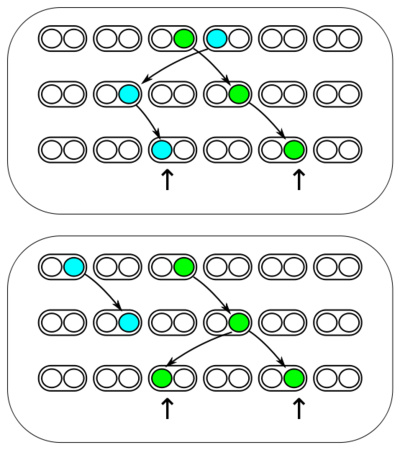Genetic Drift
Genetic drift is the loss of genetic variation over time due to random chance in the sampling of alleles from one generation to the next. By chance some genetic variation is not sampled and is lost to future generations. Genetic drift can be thought of as evolutionary sampling error.
Initial genetic variation is expected to be lost at a rate of 1/(2N) each generation. When two copies of a gene are compared there is a 1/(2N) chance that they are both copies of an identical copy in the generation before. Thus any potential differences that could have existed between them are lost.
The reduction of genetic variation over time (generations) can be modeled as a geometric distribution. An initial level of heterozygosity ([math]H_0[/math]) is expected to decay to a level ([math]H_g[/math]) after g generations according to
[math]H_g = H_0 (1-1/2N)^g[/math].
Each generation [math]1-1/2N[/math] variation remains after drift and this is raised to the g number of generations that drift has had to act.
Over a large number of generations this can be modeled in continuous time as
[math]H_g = H_0 e^{-g/2N}[/math].
